DANGER ZONE
Increased scrutiny on ball carriers under new Saru tackle trial
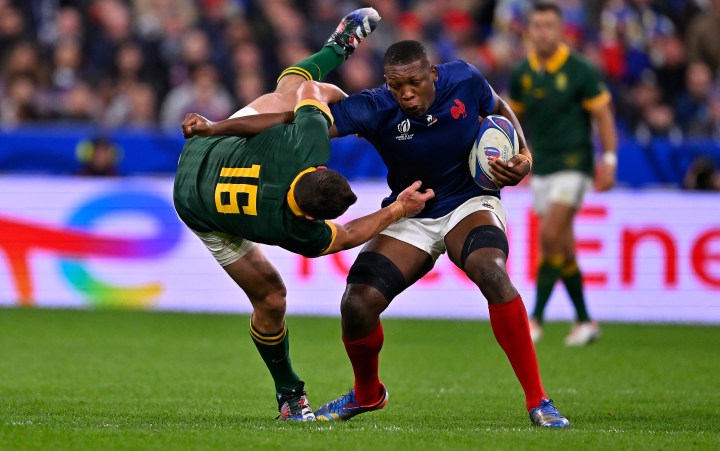
New tackle guidelines to be trialled in South African amateur rugby, will place a much bigger onus on ball carriers to ensure player safety.
Unlike current regulations that almost exclusively place the safety burden on tacklers, a new trial will place equal responsibility on ball carriers to assist with player safety.
New laws to make rugby safer at school and club level were approved by the members of the South African Rugby Union (Saru) at a general council meeting late last year and have come into force since the start of the year.
The updated laws for amateur rugby relate to lowering of the maximum legal tackle height, while also outlawing potentially dangerous ball-carrying actions and techniques.
A Saru Tackle-Height Player Safety Task Team looked at 611 incidents that required a Head Injury Assessment (HIA) and found that in 335 of the incidents it was the tackler who was injured.
A further 129 HIAs were required to the tackled player while ruck HIAs were a distant third with 73. It’s clear that the tackle situation is rugby’s most dangerous event.
These trials will have a massive impact on highly competitive schoolboy and club rugby fixtures in South Africa, where they will be used with a view to being adopted at professional level.
Practically, the implementation of these amendments will require coaches at amateur level, and referees at that level, to amend their thinking and training drills as well.
One of the most eye-catching tweaks to the law is that there is now a duty on the ball carrier to be ‘safer’. At professional level, almost all the responsibility for player safety lies with the tackler.
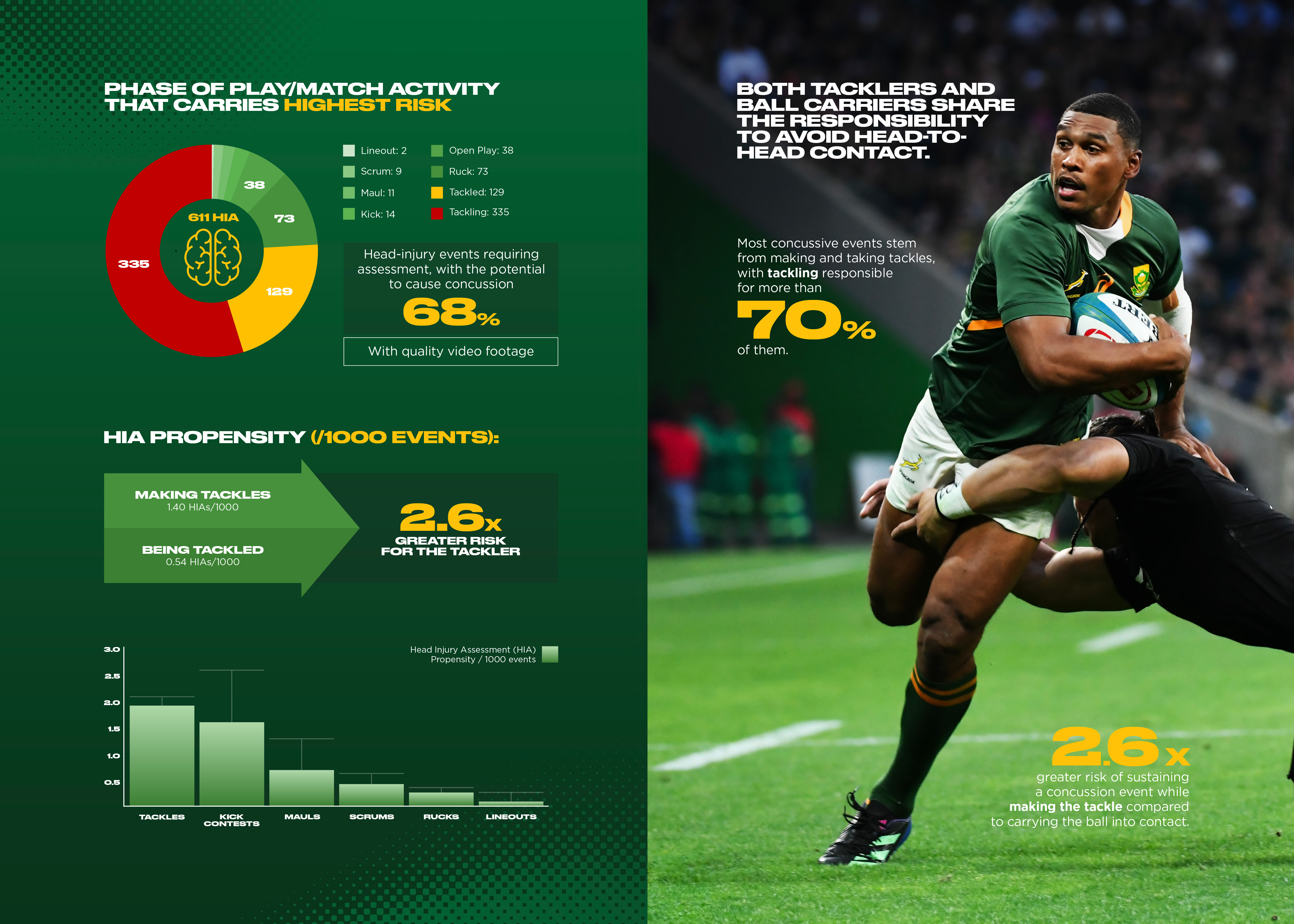
A study revealed that the tackle is rugby’s most dangerous area when it comes to player welfare. (Graphic: Supplied)
When it comes to sanctioning at this highest level of the game, the change in body height by the ball carriers determines the severity of the punishment meted out to defenders.
It ranges from a penalty to yellow or red cards. If the ball carrier changes height, there is mitigation in the dishing out of punishment.
Under Saru’s new guidelines though, there is now a heavy emphasis on the ball carrier to retain an upright position, providing the tackler with a target in the prescribed ‘safe zone,’ for targeting when tackling.
This is going to make officiating even more complex because referees will now have to determine whether the ball carrier presented a reasonable ‘tackle zone’ for the defender to aim at.
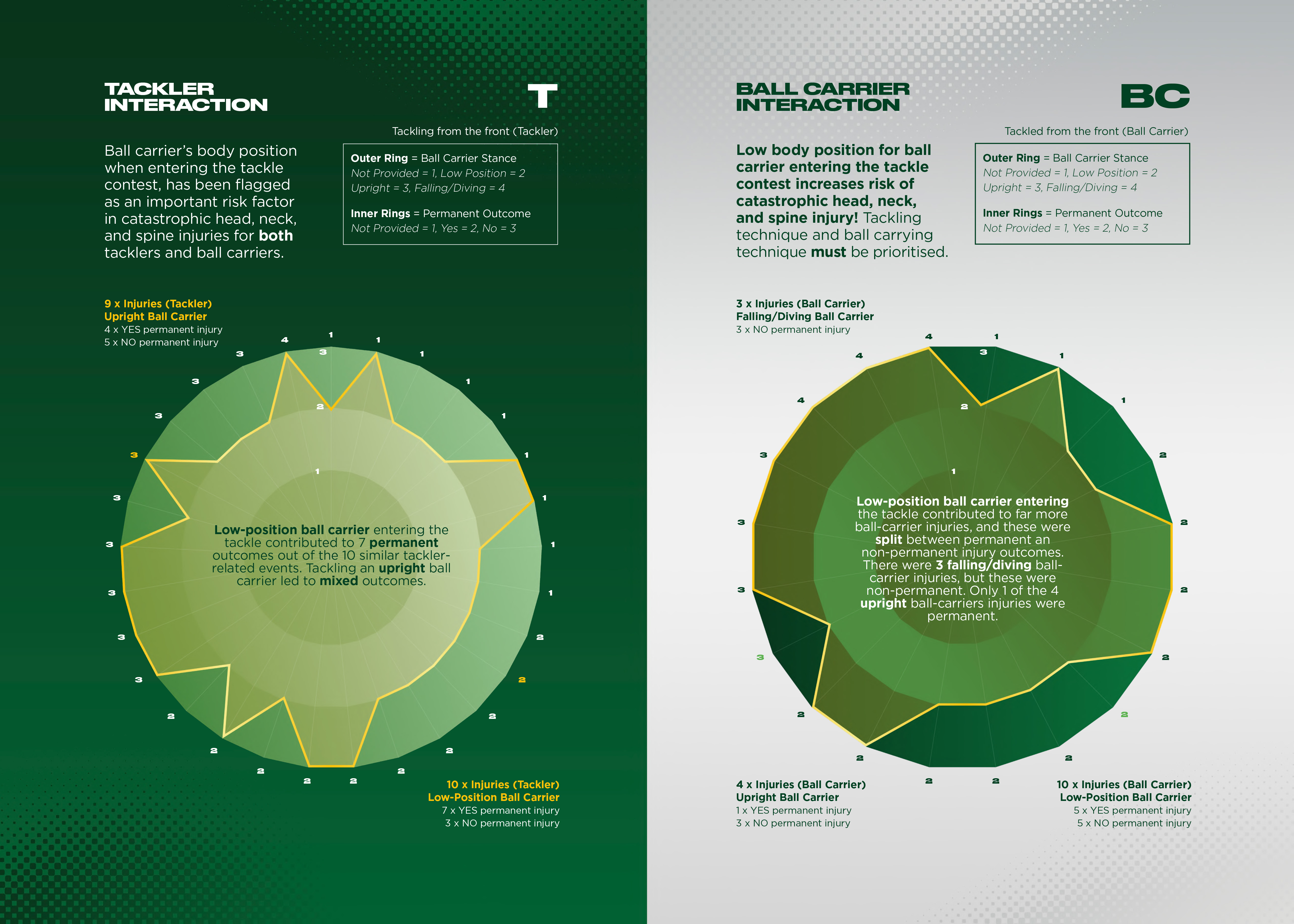
The data is clear that ball carriers have to change technique to make the game safer. (Graphic: Supplied)
What the trial laws look like now
Proactivity versus inertia
Of course, this is only a trial and it will come with teething issues and it might even have some unintended consequences that have not been considered yet.
But with player safety and elimination of severe head injuries from the game, proactivity is better than inertia.
“Whether we like it or not, at some stage the laws are going to change worldwide around tackle height, so we need to be part of the solution and not having to play catch-up after the laws have already been made,” Saru director of rugby Rassie Erasmus said.
According to Erasmus — and in line with World Rugby’s request for unions to consider and trial law variations of lowered tackle-heights, with the Saru law variations adopted late last year — the local governing body can drive a practical change.
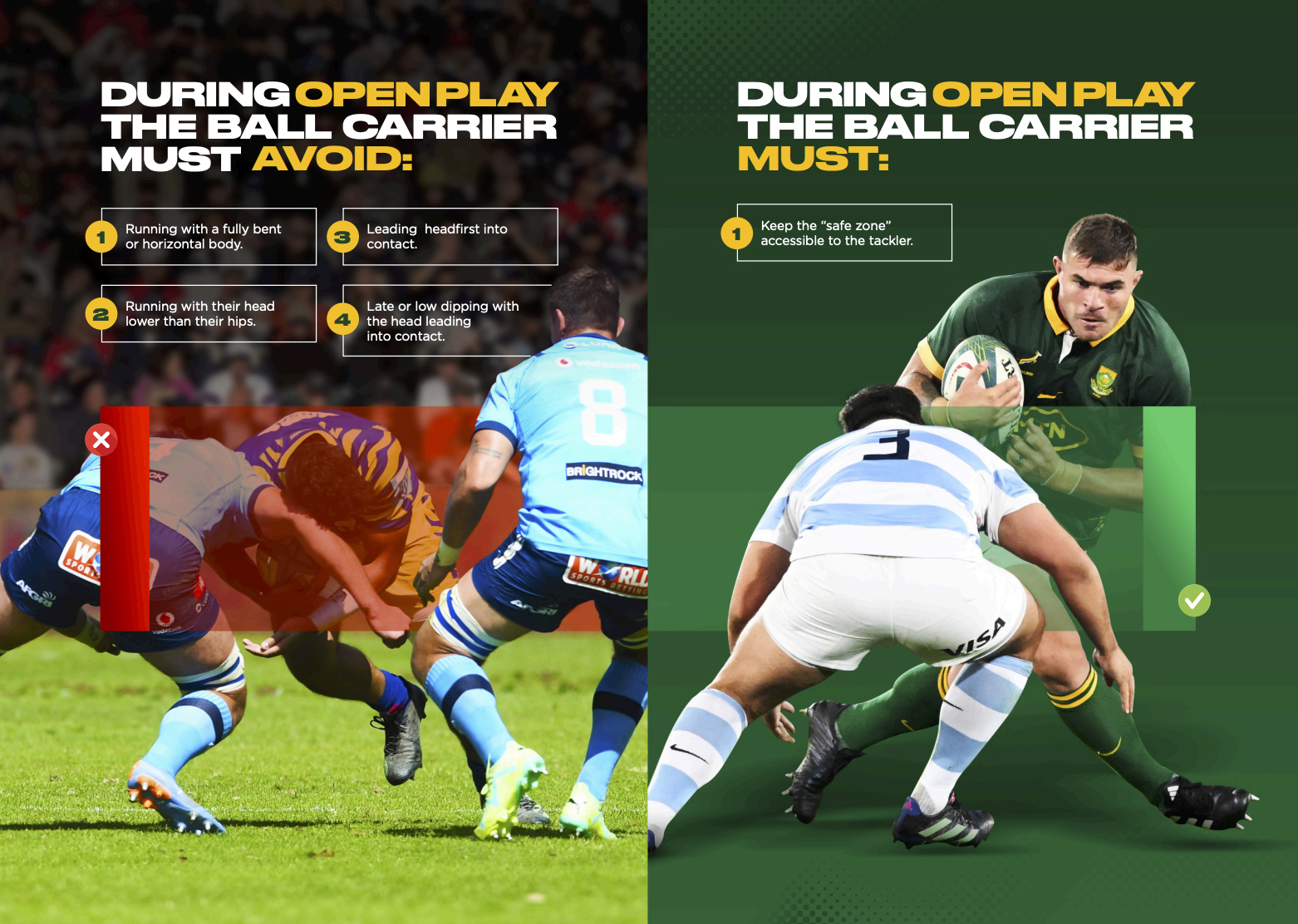
There is a much greater onus on ball carriers to present a ‘safe zone’ for tacklers under this trial. (Graphic: Supplied)
It can potentially extend these trials to the rest of the world if successful in lowering head-contacts and catastrophic tackle-related injuries. There are several other international unions also trialling variations of lowered tackle-height laws.
“This is not going to happen overnight, and this is going to take time for everyone to get this under wraps,” said Erasmus.
“We have limited time to create a significant behaviour change, and therefore a phased sanction approach is not ideal and will not necessarily be effective.
“The hard sanction approach to be implemented will lead to an initial increase in penalties, but once players, coaches, and referees get to grips with these changes, players’ behaviour will adapt, players will be penalised less, and this will become a more appealing game.
Read more in Daily Maverick: Rugby: Debate on tackle-height law highlights concussion dark cloud
“As custodians of the game, we have a responsibility to follow the scientific evidence to ensure that players are well-protected within a physical, collision-based, contact-sport such as rugby union.
“That means that although one appreciates the gladiatorial nature of the game, this should not increase the risk disproportionately to the players. The current law changes are trying to maintain the physical essence of the game while simultaneously lowering the risk of concussions, catastrophic head, neck, and spinal injuries and long-term brain health complications.
“Yes, the new laws will change some parts of the game, such as more offloads, running rugby and open play, but will not detract from the physicality and confrontational nature of what defines rugby union.”
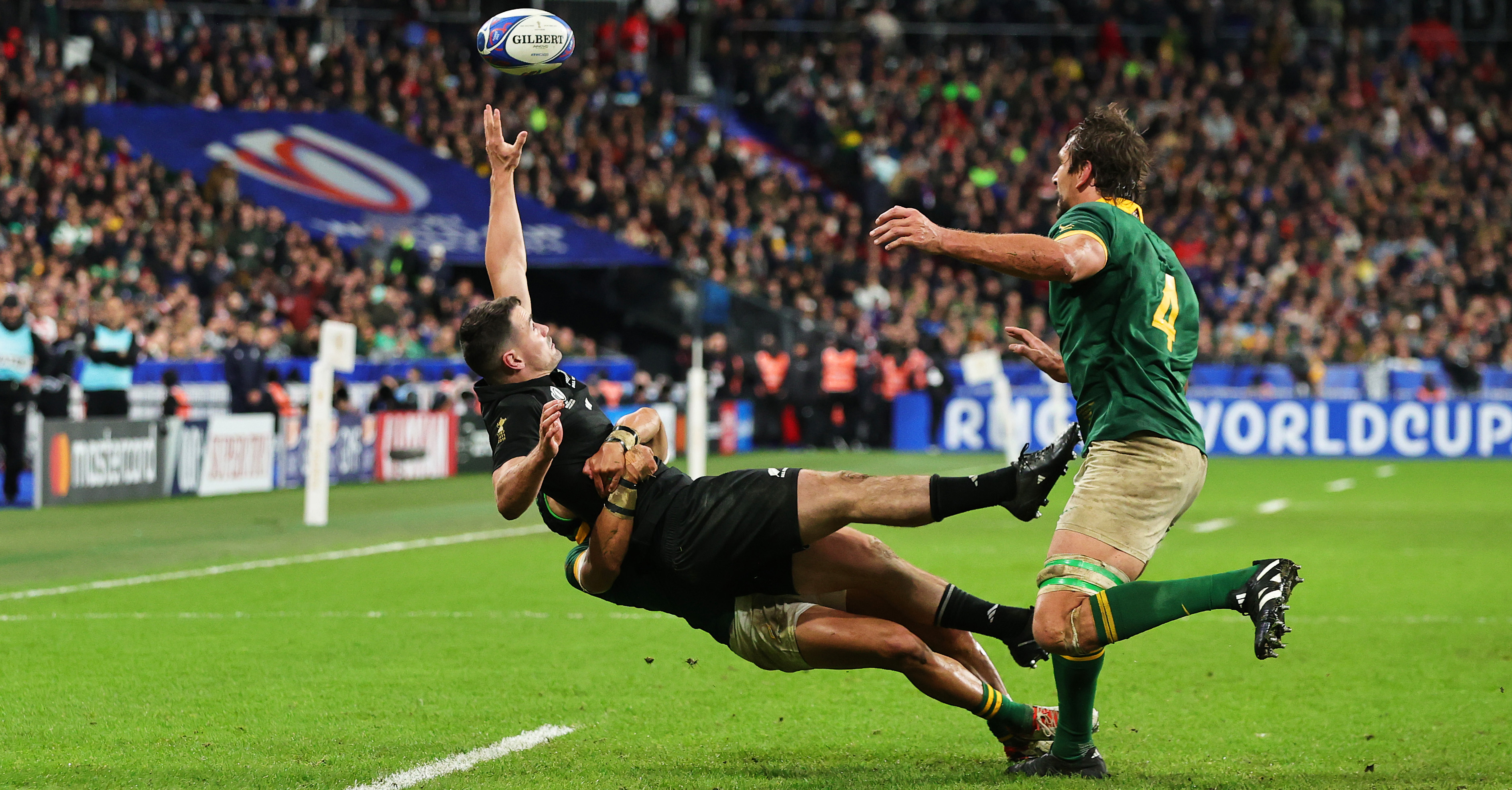
Will Jordan of New Zealand is tackled by Cheslin Kolbe of South Africa (obscured) during the Rugby World Cup on 28 October, 2023 in Paris, France. (Photo: David Rogers/Getty Images)
Onus on ball-carrier
In a significant development, there will be much greater scrutiny on ball carriers and their body heights. They will need to present a better target for defenders to hit, which will take some adjustment.
The body-positioning of ball carriers will also come under close scrutiny with a player’s head not allowed to dip below waist height. Late dipping of the head, or leading with the head will also be penalised.
“By limiting the ball carrier’s body height and position into contact there is a shift away from the tackler being the sole responsible person for the safety of the tackle contest,” Erasmus explained.
“This is not stopping the ball carrier from taking the ball into contact; the tackler must however always have a visible target to hit that is safe. This keeps both tackler and ball carrier safe in the contest.”
A scientific analysis of South African rugby union tackle-related catastrophic injury data showed that a low-positioned ball carrier entering the tackle contest in a low forward-bent position increased the risk of catastrophic head, neck, and spine injuries to both tacklers and ball carriers alike.
Therefore, Saru included the law adaption to restrict the way in which the ball carrier is allowed to carry the ball into contact.
Erasmus pleaded with schoolboy and club coaches to train their players properly: “Get your players to do the Tackle-Height Change Education module on MyBokSmart, so that your players can also have a better understanding of why these laws have been implemented. This will lead to more buy-in”.
“Yes, you can get a concussion while tackling at the hips, but the chance of getting a concussion while tackling at the hips is sizably lower than when tackling upright or sharing headspace.
“Those who adopt these law changes early on, will reap the benefits sooner, improve safety, have less head contact, and a better game.
“With a regulated and lengthy stand down period from rugby with all suspected and confirmed concussions, adopting these new laws will be in the players’ and the teams’ best interests, as one of the main purposes are to reduce the number of head contacts and concussions.”
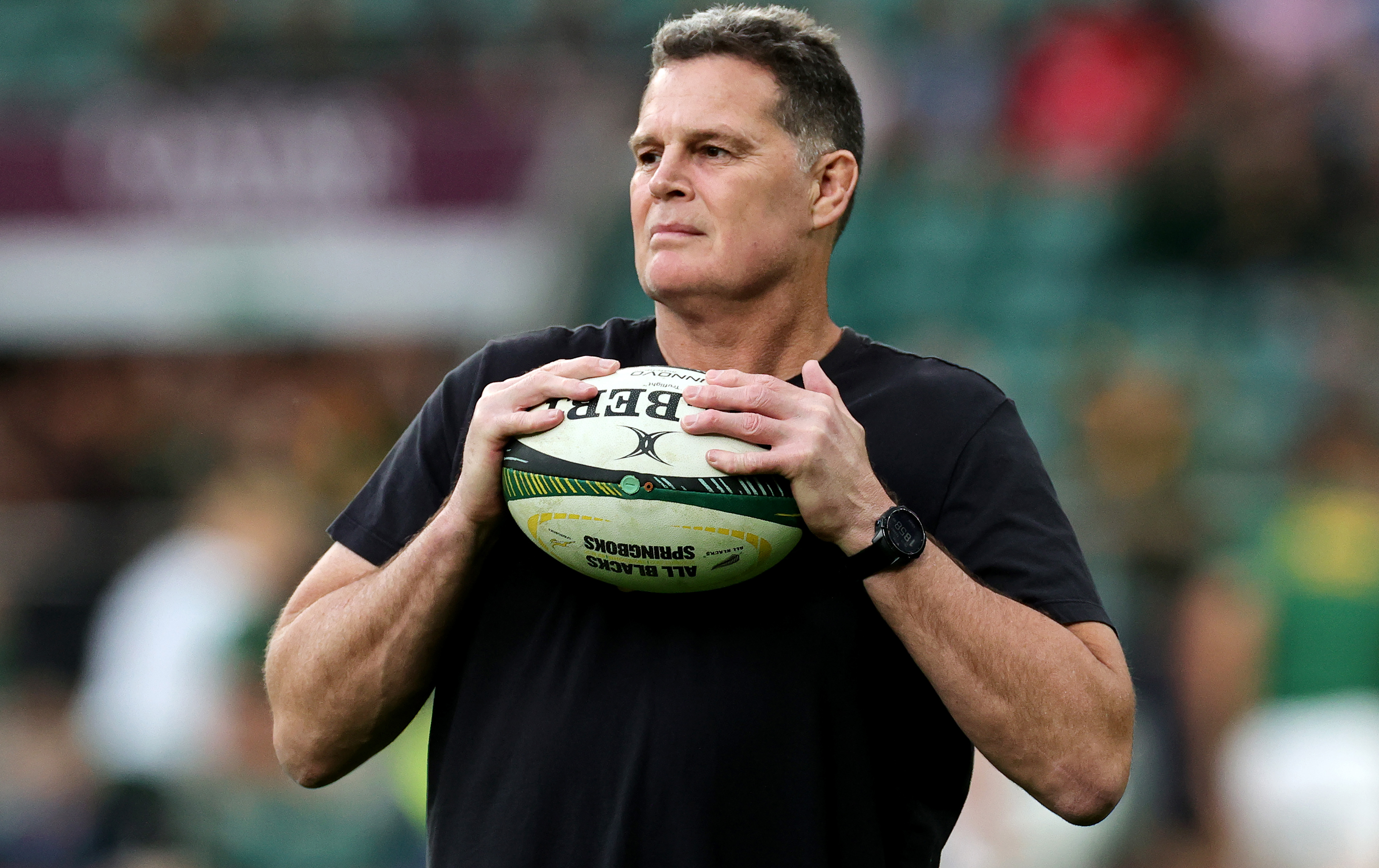
Rassie Erasmus, Saru Director of Rugby. (Photo: David Rogers/Getty Images)
No excuses
Erasmus said there is no excuse for club and school coaches who believe new tackle height laws for participation in rugby are difficult to instil.
Springbok coaches and players worked incredibly hard at last year’s Rugby World Cup — and successfully — to eradicate unnecessary penalties and cards for illegal and dangerous tackles from their game, having identified conceding such penalties as a high risk to success.
“Tackling lower is coachable, so this cannot be used as an excuse — you need to coach and practise correct technique,” said Erasmus.
“We therefore built it into our conditioning and technical preparation for the tournament. You cannot simply tackle lower without focusing on correct technique.
“Tackle bags are only training tools and should not dominate your tackle training. You do need to work more on moving bodies, but within a controlled space, where players learn to adjust their height within a more dynamic game-like situation.” DM




















 Become an Insider
Become an Insider
When I was at school Izak van Heerden was our coach. If you tackled a player above the waist you would have to bend on Monday. A person runs on his legs. If you take them away they are not going anywhere. This business of dancing with an opposition player belongs on the dance floor not the rugby field.
I think I get it. The tacklee must make it easier for the tackler to tackle him.
Yes! Run nicely upright, shoulders back posture, with ball in both hands so that you don’t get tempted to punch, sorry hand off, the tackler.
Maybe they should just play touch rugby.
Agree. They are destroying rugby one bit at a time. Probably people who have never played are making these rules
Wrong. I think Rassie has played. Do you think? Almost all the people involved in these changes are ex-players. Concussion – TBI &, ultimately, CTE – will have devastating consequences on the game we love, & its survival. Rugby, as a professional sport, is no longer what it was. Everyone is much bigger & stronger. I played for 30 years (in the days of yore) & never saw wings around 1.95m & 100kgs. I actually believed we’d never see a rugby player that weighs 140kgs. The game is surely too dynamic. Wrong! I agree that we’ll lose something from a spectator perspective, but I’d rather learn to appreciate the new nuances & see rugby heroes live healthy long lives.
I prefer running rugby anyway. Incessant tackling makes for a slow and boring game .
Sure this comes from the France – South Africa game, recently (two years ago?) when France had four head injury assesements in the first half. There were also a number of players who should have been assessed but were not.
Most from South African ball carriers dropping their shoulders into the faces of tacklers.
Of the four, three had their brains too scrambled to carry on, which meant no rugby for 10 days.